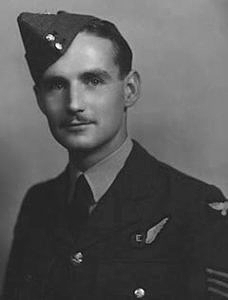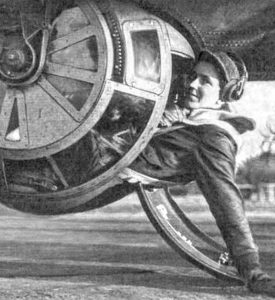They are truly fortunate individuals. We wouldn’t want to test our luck in a similar free fall experience. If you have ever experienced a painful fall, even from a chair, you know the discomfort it brings. Now imagine falling from a significantly greater height.
Let’s consider a scenario where we raise the stakes, let’s say, approximately 10,000 feet higher.
Granted, experiencing a fall from such a height would likely result in minimal pain. Surviving a fall from such heights is an uncommon occurrence, but there exist a fortunate few who managed to defy the odds.
Presented below are six individuals who miraculously survived incredibly perilous descents without the aid of a parachute.
10,000 Feet: The Extraordinary Survival of Juliane Koepcke
On Christmas Eve of 1971, Juliane Koepcke found herself aboard LANSA Flight 508, traveling from Lima to Pucallpa, when a lightning strike hit the plane. This sudden impact caused the aircraft to disintegrate, propelling numerous passengers into the sky from an altitude of 10,000 feet.

While still securely fastened to her seat, Koepcke defied the odds and managed to survive as her portion of the aircraft descended rapidly into the depths of the Peruvian jungle. Remarkably, she sustained relatively minimal injuries, including a broken collarbone, a deep wound on her right arm, an eye injury, and a concussion.
Following her release from the seat belt, Koepcke embarked on an 11-day quest through the dense jungle in search of assistance. However, her journey was far from effortless. At one juncture, she resorted to utilizing gasoline to extract maggots from her infected arm wound.
Eventually, she stumbled upon a nearby fishing encampment where she received the necessary medical attention.
Survival Story: Bear Grylls Conquers a 16,000 Feet Challenge

Yes, we’re talking about none other than Bear Grylls, the adventurer known for his infamous quote “better drink my own pee.” Prior to his television stunts, he underwent rigorous training to become a member of the elite British SAS special forces. One of the exercises involved him leaping out of a plane from a staggering height of 16,000 feet.
Bear Grylls found himself in a dire situation when his parachute failed to open. Reflecting on the incident, he admitted that he should have utilized his reserve parachute instead. However, inexplicably, he chose not to do so.
That choice likely spared his life.
Grylls came down on his back directly onto his parachute pack, resulting in three fractured vertebrae, but miraculously, his spinal cord remained unharmed.
Following a rigorous rehabilitation program, Grylls accomplished the remarkable feat of scaling Mount Everest a mere 18 months later. Subsequently, he embarked on his notable career, which includes consuming his own urine. However, despite his accomplishments, he continues to endure persistent back pain to this day.
Nicholas Alkemade: Surviving an 18,000-Foot Fall
On March 24, 1944, Nicholas Alkemade, serving as the tail gunner of a British Lancaster bomber during WWII, experienced a terrifying ordeal. During an attack by a German fighter plane, his bomber caught fire, and unfortunately, his parachute was also engulfed in flames.

However, he refused to meet his fate alongside the doomed plane and made a daring decision to jump from a height of 18,000 feet. Hurtling downwards, he was incredibly fortunate that his descent was softened by the presence of soft pine trees and a thick layer of snow.
In a stroke of pure luck, Alkemade miraculously escaped with just a sprained ankle, while tragically, the remaining members of his crew were not as fortunate and lost their lives in the crash of the Lancaster plane located in close proximity.
When the Germans arrived to apprehend him, they were skeptical of the account he recounted. It was only when they stumbled upon his charred parachute that they truly comprehended the incredible fortune that had favored Alkemade.
Following his miraculous survival, Alkemade endured a year of captivity in a German POW camp until his return in May 1945. Regrettably, he passed away at the age of 64 in 1987.
Alan Magee’s Astonishing Fall from 22,000 Feet

Similar to Alkemade, Alan Magee served as a bomber gunner during WWII, but fought on the U.S. side. In January 1943, while aboard a B-17, Magee’s parachute was torn apart by German anti-aircraft fire.
Following another impact that resulted in the loss of a section of the aircraft and rendered Magee unconscious, he was propelled out of the bomber, descending a staggering 22,000 feet until he crashed through the glass roof of a railway station in St. Nazaire, France.
Contrary to expectations, the glass surface turned out to be a fortunate landing spot for Magee, as it played a crucial role in saving his life. The shattered glass acted as a cushion, mitigating a significant portion of the impact and preventing Magee from experiencing a fatal collision with the ground.
However, Magee’s survival was not without its toll. He endured multiple fractures, extensive damage to his nose, eye, lungs, and kidney, and came dangerously close to severing his arm. Additionally, the 28 shrapnel wounds he sustained during the plane’s attack added to his injuries.
Following the incident, Magee was confined to a German POW hospital for the remainder of the war, similar to Alkemade’s experience. However, in 1945, he was eventually liberated. After the war, Magee pursued a career in aviation, flying civilian planes until his retirement in 1979. He lived until the age of 84, passing away in 2003.
Ivan Chisov’s Remarkable Descent from 23,000 Feet
Ivan Chisov, a member of the Soviet forces during WWII, served as a crewman on an Ilyushin Il-4 bomber. In January 1942, their aircraft was targeted by German fighters, causing it to plummet uncontrollably.

Chisov courageously ejected from the plane at a height of 23,000 feet but refrained from deploying his parachute due to the fear of being targeted by German forces. His intention was to open it at a later moment, but unfortunately, he lost consciousness before he could execute his plan.
With a tremendous impact, Chisov collided with the edge of a snow-covered ravine, hurtling at a staggering speed of 150 mph, and subsequently tumbling and sliding down to its base. Soviet cavalrymen, who witnessed the descent, stumbled upon Chisov at the scene, critically wounded, suffering from injuries that included damage to his spinal cord.
Despite the immense challenges, Chisov demonstrated remarkable resilience and made a swift recovery. Merely three months later, he resumed his duties in the sky. However, recognizing his significant contributions to the Motherland, the Soviet commanders decided to assign him the responsibility of training new bomber crews.
Following the war, Chisov embarked on a new role as a political officer and propagandist for the Soviet Army. Tragically, he passed away in 1986 at the age of 70, leaving behind a remarkable legacy.
Surviving a Fall from 33,330 Feet: The Incredible Story of Vesna Vulovic

On that fateful day of January 26, 1972, Vesna Vulovic, a flight attendant, found herself aboard a flight from Stockholm, Sweden, to Belgrade, Serbia. Little did she know that this flight would etch her name into the history books as the record holder for the highest fall survived without a parachute. It was during this ill-fated journey that a bomb detonated in the plane’s luggage compartment.
As the explosion ripped through the aircraft, it shattered the plane into fragments and tragically claimed the lives of all passengers and crew, leaving only Vulovic to defy the odds. In a twist of fate, she found herself trapped within the descending tail section, held captive beneath the weight of a food cart.
Descending together from a staggering height of 33,000 feet, both the plane’s tail and Vulovic plunged into the wintry forests of the northern Czech Republic, their journey culminating in a crash landing. Remarkably, Vulovic emerged as the sole survivor, owing her survival to the fortuitous angle of descent and the cushioning embrace of the deep snow.
Furthermore, Vulovic’s naturally low blood pressure proved to be a saving grace, ensuring that her heart remained intact despite the impact.
Nevertheless, Vulovic suffered a fractured skull, multiple leg fractures, and three broken vertebrae, as well as a shattered pelvis, leading to temporary paralysis from the waist down. However, astonishingly, she regained her ability to walk within just 10 months, although she was left with a permanent limp due to spinal injuries.
Following the incident, Vulovic became an advocate for pro-democracy causes and passed away in 2016 at the age of 66. Remarkably, she consistently mentioned her inability to recollect any details about the events following the detonation of the bomb.


